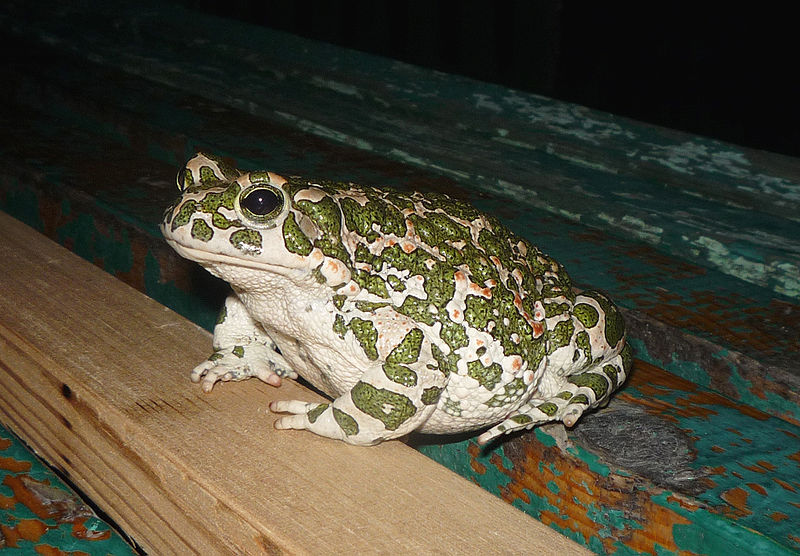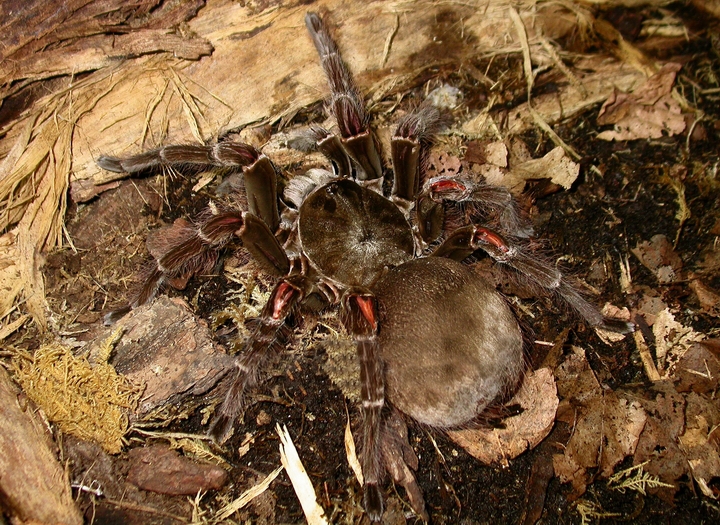
Enclosure
Toads spend their time on and below the ground, so floor space is the most important consideration. Read More »

Toads spend their time on and below the ground, so floor space is the most important consideration. Read More »
 Please see Part 1 of this article to learn about Assassin Bugs that lure prey by tricking spiders and termites.
Please see Part 1 of this article to learn about Assassin Bugs that lure prey by tricking spiders and termites.
West Africa’s White-Spotted Assassin Bug (Platymeris biguttatus) and the Red-Spotted Assassin (P. rhadamanthus) of East Africa are sometimes offered for sale in the USA and are well-established in private and public insect collections.
Warning: All Assassin Bugs can administer a painful bite with their sharp proboscis, or rostrum. As infection and an allergic reaction to their venom are distinct possibilities, they should only be kept by well-experienced adults. These and other species can also spray their venom, so protective eyewear is a must. All Assassin Bugs, including the US natives, should be handled only with forceps. Read More »
 As a boy working for an animal importer in NYC, I was much taken by the first hatchling Common Musk Turtle (Sternotherus odoratus) I encountered. The minute, jet-black beast, much smaller than a baby Red-Eared Slider, was irresistible. Last month that very same turtle turned 46 (please see photo). So I am, of course, partial to the species, but there are actually very good reasons to keep this fascinating turtle and its relatives.
As a boy working for an animal importer in NYC, I was much taken by the first hatchling Common Musk Turtle (Sternotherus odoratus) I encountered. The minute, jet-black beast, much smaller than a baby Red-Eared Slider, was irresistible. Last month that very same turtle turned 46 (please see photo). So I am, of course, partial to the species, but there are actually very good reasons to keep this fascinating turtle and its relatives.
This turtle rarely exceeds 4 inches in length (record: 5 3/8 inches); males average 3 inches. The highly-domed carapace is olive-brown to black and often algae-coated. The plastron is small, leaving a good deal of flesh exposed. The skin is gray to black, and there are two yellow stripes on the head and a pair of sensory barbels (fleshy protuberances) on the chin and throat. Read More »
 The widespread Green Frog (Lithobates/Rana clamitans) often provides aspiring herpetologists with an introduction to frog-keeping. Please see Part I of this article for more on its natural history.
The widespread Green Frog (Lithobates/Rana clamitans) often provides aspiring herpetologists with an introduction to frog-keeping. Please see Part I of this article for more on its natural history.
Although fairly common throughout much of its range, in some places the Green Frog is impacted by habitat loss due to shoreline development and the introduction of Bass, Carp and other fishes, which consume eggs and tadpoles.
In recent years, deformed Green Frogs have been found in ever-increasing numbers. The cause is unknown, but pesticide or other chemical pollution is suspected. Farm ponds usually have a higher incidence of deformed individuals than do urban or rural habitats. Green Frogs are regulated as a game species in several states, as they are collected for the food trade (frog’s legs) and for use as fishing bait (ahh!). Read More »
 I’m often contacted by Arachnid and millipede owners who are concerned about the tiny white “specks” that they notice crawling about their terrariums and on their pets. In almost all cases, the little beasts turn out to be relatively harmless Mites. Mites are actually Arachnids, related to spiders and scorpions, and are unique in the incredible diversity they have attained – over 45,000 species have been described, with many more than that likely remaining to be “discovered”. Read More »
I’m often contacted by Arachnid and millipede owners who are concerned about the tiny white “specks” that they notice crawling about their terrariums and on their pets. In almost all cases, the little beasts turn out to be relatively harmless Mites. Mites are actually Arachnids, related to spiders and scorpions, and are unique in the incredible diversity they have attained – over 45,000 species have been described, with many more than that likely remaining to be “discovered”. Read More »